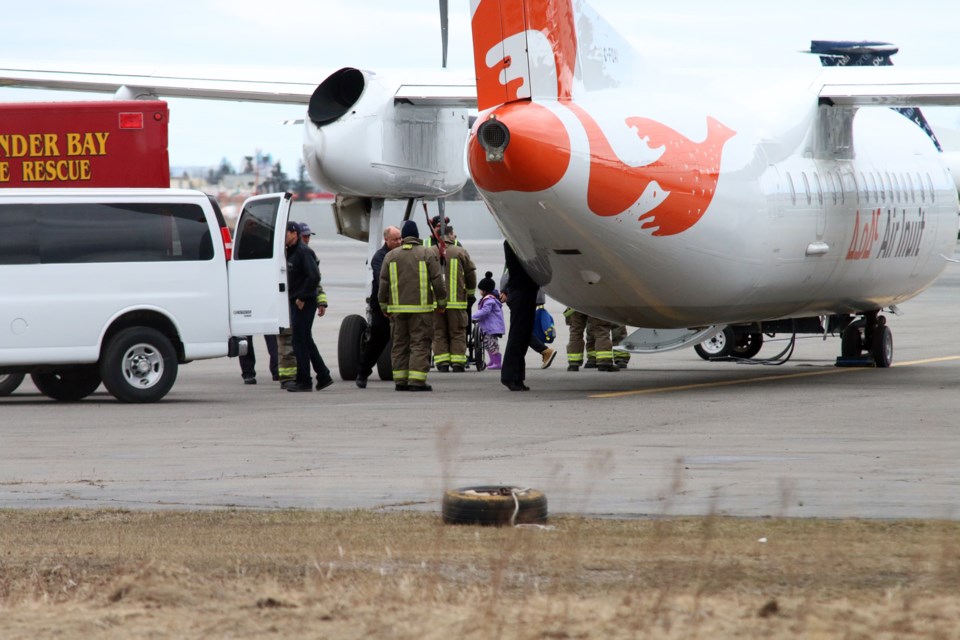THUNDER BAY - With the spring thaw and potential for rising water levels in remote First Nation communities, the provincial government says it is preparing to respond to flooding emergencies in the far north, but opposition MPPs say its not doing enough.
“Northern municipalities, like Cochrane, Hearst, Kapuskasing, Sudbury, Thunder Bay or Timmins, have welcomed evacuees for years. But this year, PEOC and the Ministry of Indigenous Affairs sat on their hands for over a month and did nothing. Then, they turned to the municipalities at the eleventh hour, in some cases without even informing local authorities,“ said NDP MPP Guy Bourgouin of the Mushkegowuk-James Bay riding.
“This is completely unacceptable. Neither the people of Kashechewan nor the municipalities in Northern Ontario deserve to be treated with inattention and rashness. It is just unfair and inhumane.”
The provincial government said it is working with federal, municipal, and First Nation partners to identify suitable locations to host evacuees if the need arises.
"During these unprecedented times, our government is prepared for any scenario, and that includes the spring flooding season," said Premier Doug Ford in a media release. "By working together with our federal, municipal, and First Nations partners and putting our provincial flooding strategy into action, we have taken the critical steps needed to help keep people and communities safe."
Municipalities across Northern Ontario say they do not have the capacity to host evacuees due to the COVID-19 pandemic.
The city of Thunder Bay is among municipalities that said it will not be able to host evacuees at this time from First Nation communities.
The province said it has taken steps to ensure non-governmental resources, such as the Canadian Red Cross can be deployed to assist evacuees to lessen the burden on municipal resources.
First Nation community members could be temporarily relocated to higher ground within the community, the province said, such as traditional hunting camps or other remote sites to address concerns around COVID-19.
“Our staff are closely monitoring ongoing flooding risks across the province and working with partners and communities on any areas of concern," said John Yakabuski, Minister of Natural Resources and Forestry.
"We are ready to respond to any requests for sandbags during this very challenging time. We also continue to work with our partners to advance the important long-term initiatives outlined in Ontario's Flooding Strategy, which will help us become more resilient to flooding events in the years to come."
Communities like Kashechewan First Nation near the James Bay coast are often forced to evacuate community members due to rising water levels along the Albany River as temperatures rise in the spring.
The city of Thunder Bay and other municipalities in Northern Ontario often hosts hundreds of evacuees.
Opposition MPPs say the provincial government is not doing enough to assist with potential evacuations and past cuts to flood management budgets by 50 per cent continues to put communities at risk.
“As Ontario faces the spread of COVID-19, Kashechewan First Nation faces two crises: the global COVID-19 pandemic and spring flooding,” said Sol Mamakwa, NDP MPP in the Kiiwetinoong riding. “A large group of the population opted to pre-emptively move to the traditional camps, but there are hundreds of others – including elders, children and the immuno-compromised – who will have to receive aid from Ontario and the federal government.”
“We all knew the time would come, but the Ministry of Indigenous Affairs and the Solicitor General’s Provincial Emergency Operations Centre (PEOC) have both dragged their feet for far too long.”
According to the provincial government’s projections, the flood risk is moderate-to-high in Northern Ontario and along the James Bay coast. Ice breakup is expected to begin in early May and the Ministry of Natural Resources and Forestry is conducting surveillance flights to monitor the situation along the rivers and tributaries.
